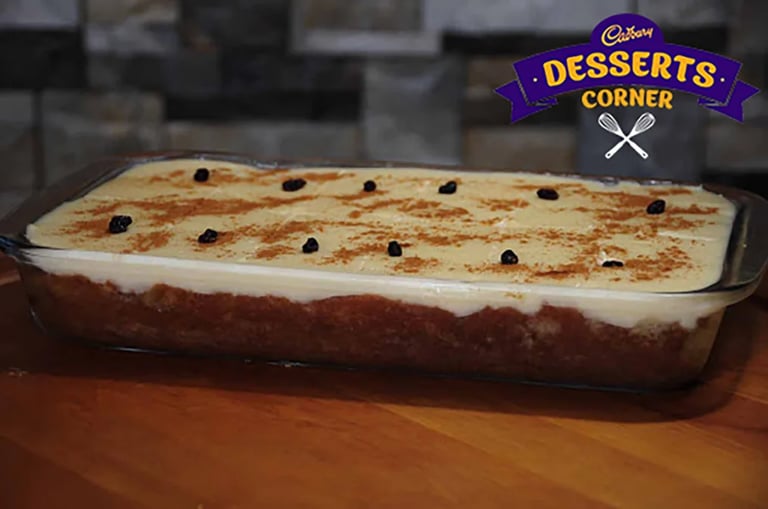- Home
- Articles
- A Taste of Tradition: Unveiling the History of Nicaragua's Beloved Dessert, Pio Quinto
Embark on a delectable journey through the rich history of Nicaragua's beloved Pio Quinto, a Christmas dessert that will tantalize your taste buds and transport you to a land of festive flavours.

Embark on a delectable journey through the rich history of Nicaragua's beloved Pio Quinto, a Christmas dessert that will tantalize your taste buds and transport you to a land of festive flavours.
Pio Quinto is a traditional Nicaraguan dessert that is typically served at Christmastime. It is believed to be named after Pope Pius V, who reigned from 1566 to 1572. The cake is made with a combination of flour, pinol (toasted white cornmeal), eggs, sugar, and milk. It is then soaked in rum and dusted with cinnamon.
The exact origins of Pio Quinto are unknown, but it is believed to have been created in the colonial period. The cake was likely inspired by European desserts, such as the Spanish bizcocho and the Italian panettone. However, Pio Quinto has its own unique flavour and texture, thanks to the use of pinol. Pinol is a staple ingredient in Nicaraguan cuisine. It is made from ground corn that has been toasted and then ground into a fine powder. Pinol is used in a variety of sweet and savoury dishes, including Pio Quinto.
Pio Quinto is a popular dessert in Nicaragua and is often served at Christmas parties and family gatherings. The cake is also a popular gift during the holiday season. In addition to being a delicious dessert, Pio Quinto also has cultural and historical significance. The cake is a symbol of the Nicaraguan people's resilience and their ability to adapt to new influences. It is also a reminder of the country's rich history and culture.
A culinary legacy

Beyond its culinary appeal, the Pío Quinto holds a profound cultural significance in Nicaragua. It represents a culinary legacy, a testament to the ingenuity and resourcefulness of Nicaraguan ancestors. It embodies the spirit of community and celebration, bringing families and friends together around the table to savour the flavours of tradition. As Nicaragua continues to evolve, so does the Pío Quinto, adapting to changing tastes and trends while retaining its essence. It remains a symbol of national pride, a testament to the enduring power of food to connect people and preserve cultural heritage. The Pío Quinto is more than just a dessert; it is a culinary ambassador, carrying the flavours and traditions of Nicaragua to every corner of the world.
Ingredients
- 1 cup all-purpose flour
- 1 cup pinol (toasted white cornmeal)
- 4 teaspoons baking powder
- 2 teaspoons unsweetened cocoa powder
- 1/2 teaspoon ground cinnamon
- 6 large eggs, separated
- 3/4 teaspoon salt
- 1 1/2 cups sugar
- 1/2 cup milk
- 2 teaspoons pure vanilla extract
Instructions
- Preheat the oven to 350 degrees F (175 degrees C).
- Grease and flour a 9x13-inch baking pan.
- In a large bowl, whisk together the flour, pinol, baking powder, cocoa powder, and cinnamon.
- In a separate bowl, whisk together the egg yolks, salt, and sugar until light and fluffy.
- Beat in the milk and vanilla extract.
- Gradually add the dry ingredients to the wet ingredients, mixing until just combined.
- In a separate bowl, whisk the egg whites until stiff peaks form.
- Gently fold the egg whites into the batter.
- Pour the batter into the prepared baking pan and bake for 30-35 minutes, or until a toothpick inserted into the centre comes out clean.
- Let the cake cool completely before frosting.
For the Sopa Borracha Syrup:
- 6 cups water
- 3 1/2 cups sugar
- 4 cinnamon sticks
- 1 teaspoon whole cloves
- Peel of 1 lemon
- 3/4 cup gold rum
- 1/2 cup raisins
- 12 prunes
Instructions
- In a large saucepan, combine the water, sugar, cinnamon sticks, cloves, and lemon peel. Bring to a boil over medium heat, then reduce heat and simmer for 10 minutes.
- Remove from heat and stir in the rum, raisins, and prunes. Let cool completely.
- To assemble the cake, pour the Sopa Borracha Syrup over the cooled cake. Let sit for at least 30 minutes, or overnight.
- Frost the cake with your favourite frosting.
More Like This
Popular Articles




Trending Web Stories
Curated Recipes

















